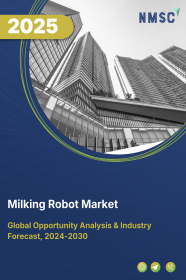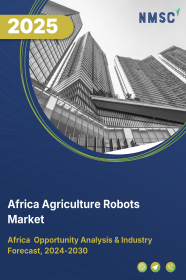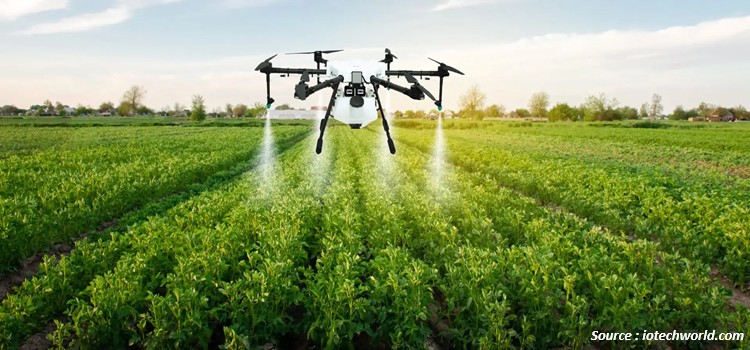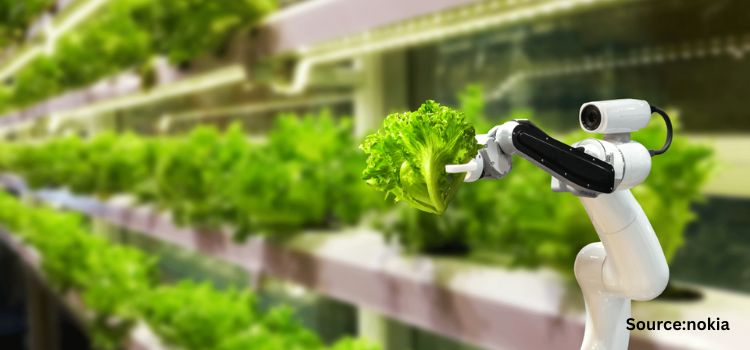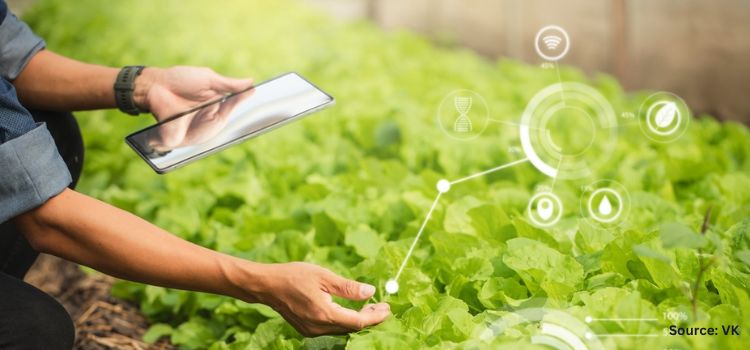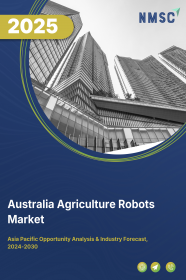
Australia Agriculture Robots Market by Type (Driverless Tractors, Unmanned Aerial Vehicles (UAVs), Milking Robots, Automated Harvest Robots, and Others), Offering (Hardware, Software, and Services), Farming Type (Indoor Farming and Outdoor Farming), Application (Dairy Management, Irrigation Management, Harvest Management, Soil Management, Inventory Management, and Others), and Others – Opportunity Analysis and Industry Forecast 2023–2030
Industry: Agriculture | Publish Date: 14-Feb-2025 | No of Pages: 89 | No. of Tables: 73 | No. of Figures: 31 | Format: PDF | Report Code : AG634
US Tariff Impact on Australia Agriculture Robots Market
Trump Tariffs Are Reshaping Global Business
Australia Agriculture Robots Market Overview
Australia Agriculture Robots Market size was valued at USD 49.26 million in 2022, and is predicted to reach USD 266.13 million by 2030, with a CAGR of 22.2% during the forecast period, 2023-2030. Agricultural robots are machines that use advanced technology to perform tasks in farming, such as planting, harvesting, monitoring, and spraying crops. They are designed to improve efficiency, production, and precision in agriculture, while reducing the need for manual labor and improving the working conditions of farmers. Agribots are sophisticated robots that use sensors, actuators, and algorithms to sense their surroundings, make decisions, and perform tasks. They use GPS or mapping technology to navigate through fields and perform a variety of agricultural activities, such as planting seeds, harvesting crops, applying pesticides or fertilizers, and monitoring crop health. They use computer vision technology to identify crops and weeds, detect pests and diseases, and take precise actions based on the information they gather.
Labor Shortages Driving Adoption of Agriculture Robots in Australia
Labor shortages in the agriculture sector have become a significant concern in Australia. This is due to the declining availability of skilled laborers, which poses challenges for farmers that rely on manual labor to perform crucial tasks on their farms. In response to this issue, agriculture robots are emerging as a viable solution and it is expected to boost the growth of agriculture robots market within the country.
Revolutionizing Australian Agriculture with Advanced Robotics Technology
The integration of advanced robotics technology has sparked a revolution in Australian agriculture, transforming the industry's landscape and operations. With the development of highly capable and efficient agricultural robots, equipped with cutting-edge sensors, computer vision, and artificial intelligence (AI), farmers now have access to a new wave of precision and automation. These robots are revolutionizing traditional farming practices by performing complex tasks with unparalleled accuracy and efficiency. Thus, it is expected to create significant growth of the market.
Financial Blockades Hindering Widespread Adoption of Agricultural Robots in Australia
The high initial investment required to acquire, integrate, and maintain advanced robotic systems is a major factor impeding the widespread adoption of agricultural robots in Australia. This is especially true for small-scale farmers or those with limited financial resources. The upfront expenses associated with purchasing the necessary technology and equipment, as well as training personnel to operate and maintain the robots, present a significant financial barrier. As a result, the widespread adoption of agricultural robots is hindered, thereby restraining the growth of the market.
Technological Advancements in Agricultural Sector
In Australia, the agriculture sector is benefiting from the rapid advancement of technology, including artificial intelligence (AI), machine learning, and robotics. As technology continues to evolve, agricultural robots in Australia have become increasingly sophisticated, intelligent, and capable of performing a wide range of tasks such as planting cover crops, managing diverse cropping systems, and providing real-time data on soil health indicators with higher accuracy and efficiency. These advancements are expected to create ample opportunities for the agricultural robots market in the country.
Competitive Landscape
The agriculture robots industry includes several market players such as Robotics Australia, Agbotix, Blue River Technology, DigiFarms, Harvest Automation, Kuka Ag Robotics, Lely, Neyra, Servocat, and Vision Robotics.
Key Benefits
-
The Australia agriculture robots market report provides a quantitative analysis of the current market and estimations through 2023-2030 that assists in identifying the prevailing market opportunities to capitalize on.
-
The study comprises a deep dive analysis of the market trend including the current and future trends for depicting the prevalent investment pockets in the market.
-
The information related to key drivers, restraints, and opportunities and their impact on the market is provided in the report.
-
The competitive analysis of the market players along with their market share in the Australia agriculture robots market.
-
The SWOT analysis and Porter’s Five Forces model are elaborated in the study.
-
Value chain analysis in the market study provides a clear picture of the stakeholders’ roles.
Australia Agriculture Robots Market Key Segments
By Component
-
Driverless Tractors
-
Unmanned Aerial Vehicles (UAVs)
-
Milking Robots
-
Automated Harvest Robots
-
Others
By Offering
-
Hardware
-
Software
-
Services
By Farming Type
-
Indoor Farming
-
Outdoor Farming
By Application
-
Dairy Management
-
Irrigation Management
-
Harvest Management
-
Soil Management
-
Inventory Management
-
Others
By End User
-
Field Crops
-
Fruits & Vegetables
-
Livestock
-
Others
Key Players
-
GEA Group
-
CNH Industrial
-
Delaval
-
Deere & Company
-
AGCO Corporation
-
Trimble Inc.
-
Naio Technologies
-
Yanmar Holdings Co. Ltd.
-
SZ DJI Technology Co. Ltd.
-
Boumatic
-
Harvest Automation Inc
-
Autonomous Solution Inc
-
Clearpath Robotics
-
Ageagle Aerial System
-
Kubota Corporation

















 Speak to Our Analyst
Speak to Our Analyst




